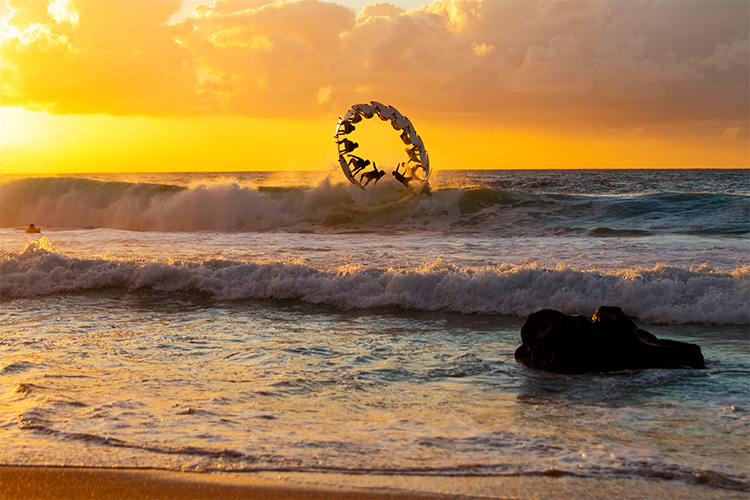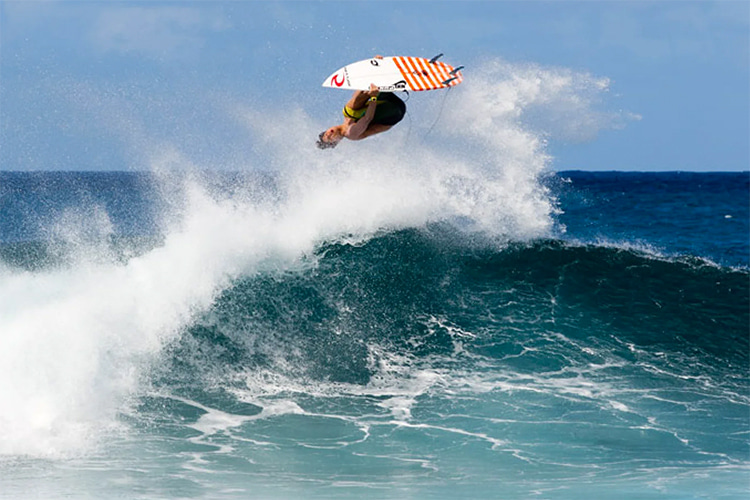The backflip is a rare and complex surfing maneuver. Here's all you need to know about the mechanics of the aerial trick.
It is unclear who performed it first, but Timmy Curran and Flynn Novak were the first to dedicate time and effort to land it flawlessly.
With the advent of aerial surfing in the 1990s, air tricks became an obsession and synonym for mastering the sport at the highest level.
Although they had been previously adopted by other boardsports like snowboarding and skateboarding, surfers knew it was doable on a wave.
Backflips don't necessarily require big waves - they just need a fast wave with good ramp opportunities. And obviously, a skilled performer.
The backflip defies physics and the common, one-dimensional human habit of rotating around their vertical axis from left to right and vice-versa (clockwise and counterclockwise) - like a lighthouse light.
That is why it's easier to do a 360 on a surfboard - with fins - than a backflip, which is a rotation around a horizontal axis.
A New School Move
With the turn of the millennium, a new generation of surfers took backflips to a new level, making them look easy to land.
Gabriel Medina and John John Florence are some of the best backflip specialists.
The backflip often requires out-of-the-water training on a trampoline, gym, or with the support of personal trainers and coaches.
Failing to land a backflip on shallow waters could result in a broken neck or, in the worst scenario, paraplegia or tetraplegia.
Although it is a spectacular, spectator-friendly maneuver, the backflip is rarely seen in professional surfing competitions.
In 2013, Zakary Noyle captured one of the most spectacular backflips of all time.
The photographer shot Medina during a late evening session in Oahu, Hawaii, and won a Red Bull Illume award for the stunning picture.

Backflip 101
To perform a backflip, you'll need to find the right wave and commit. Here's how to do it and land the sometimes off-axis spin:
- Take off on a fast, frontside wave;
- Ride as fast as you can and pump the surfboard if needed;
- Eye a steep section or an about-to-break lip;
- Hit the open-face ramp with both feet spread apart;
- Once you feel the pop, grab the board's rails with both hands;
- As you start the aerial projection, look behind your inside shoulder;
- Initiate the flip with your front knee nearly touching the chest;
- Once the spin has been completed, release your hands from the surfboard;
- Start extending your body to slow down the motion;
- Look at where you're going to land, land, and ride away;
Extra Tips
If you're able to get the right projection off the wave, you'll find it easy to land the trick.
Depending on the direction of the projection and the behavior of the wave, you may land on the flats, over the whitewater, or on an open wave face.
Ideally, you should be able to ride out of the maneuver, resume surfing as usual, and continue with a display of impressive tricks.
The backflip is one of those advanced surfing moves that require a lot of practice, experimentation, trial and error, and minor adjustments.
You'll need to master the frontside air before going for the ultimate aerial trick.
